manipulation
 Disinfection quality control
Disinfection quality control
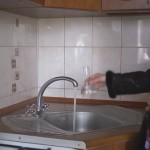 Since childhood, everyone knows the expression "cleanliness is the key to health, and order, above all."
Since childhood, everyone knows the expression "cleanliness is the key to health, and order, above all."
But how to check how well the disinfection of the premises is carried out? Quality control of cleaning and disinfection in any premises can be carried out in three ways:
read more »
 Chemical sterilization
Chemical sterilization
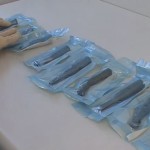
Sterilization is a complex of complex measures aimed at eliminating pathogenic microflora.
It can be produced by physical or chemical action on materials. In medicine, all instruments, devices and devices that come into contact with blood, mucous membranes or wound surfaces are subjected to mandatory sterilization treatment. Read completely "
 The work of a nurse in the infectious diseases department
The work of a nurse in the infectious diseases department
 Patients admitted to the infectious diseases department need special care, especially those who have been diagnosed with a severe form of a particular infection.
Patients admitted to the infectious diseases department need special care, especially those who have been diagnosed with a severe form of a particular infection.
Much here depends on the nurses, whose professional skills help to properly organize the treatment process prescribed by the doctors. Read completely "
 Setting a hypertonic enema
Setting a hypertonic enema
 Easy to use and in composition, an enema is placed, including at home. It consists of a solution of magnesium sulfate 20%, it can be 30%, the temperature of the solution should be 38 ºС. The second option is to use a 10% sodium chloride solution, the people use ordinary edible salt. Be sure to pay attention to contraindications, if arterial or intracranial pressure is elevated, and if edema is observed, it is not recommended to use a water-based enema.
Easy to use and in composition, an enema is placed, including at home. It consists of a solution of magnesium sulfate 20%, it can be 30%, the temperature of the solution should be 38 ºС. The second option is to use a 10% sodium chloride solution, the people use ordinary edible salt. Be sure to pay attention to contraindications, if arterial or intracranial pressure is elevated, and if edema is observed, it is not recommended to use a water-based enema.
The very procedure for using an enema is the introduction of a prepared solution into the rectum. Penetrating inside, the solution helps to thin the feces, to facilitate its removal from the intestines. The enema acts instantly, improving the condition of a person.
An enema is prescribed for people with problematic fecal discharge. With the introduction of an enema, the patient's blood circulation volume decreases, pressure decreases.
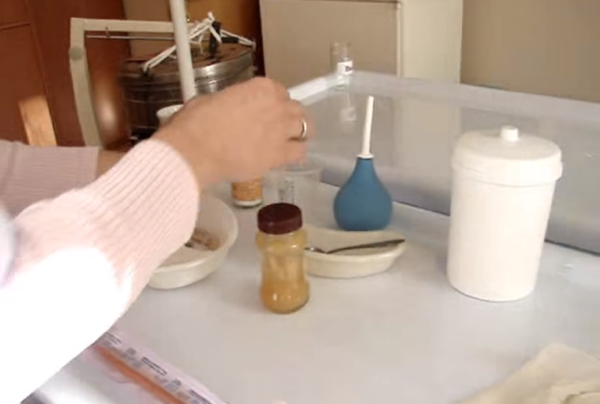
 Caring for a patient in a coma
Caring for a patient in a coma
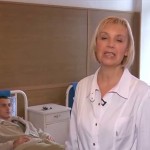
A coma is an unconscious state of a person in which the functions of almost all sensory organs are impaired. In a coma, inhibition of the higher nervous activity of a person is clearly expressed. The causes of this condition are circulatory disorders of the brain, diabetic or renal coma, liver dysfunction, severe thyroid disease, mushroom or gas poisoning, and so on.
Read completely "
 First Aid for Seizures
First Aid for Seizures
Seizures, causes and their manifestations
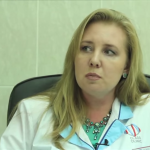 Seizures is a non-specific reaction of the body to the manifestation of external and internal stimuli, which lead to sudden attacks of muscle contraction uncontrolled by the patient, lasting for various periods of time.
Seizures is a non-specific reaction of the body to the manifestation of external and internal stimuli, which lead to sudden attacks of muscle contraction uncontrolled by the patient, lasting for various periods of time.
Often during convulsions, patients are prone to loss of consciousness. Sources of seizures (in other words, convulsive syndrome) can vary from congenital defects, hereditary diseases and pathologies, to tumors and other acquired causes.
Such a syndrome can even be caused by a banal strong emotional overstrain and a sharp increase in the patient's body temperature (mainly when the patient is a child). Read completely "
 First aid for nosebleeds
First aid for nosebleeds
 Epistaxis is the outflow of blood from the nasal cavity.
Epistaxis is the outflow of blood from the nasal cavity.
First aid for nosebleeds.
Reasons for appearance.
In healthy adults, bleeding can cause heat stroke or sunstroke (overheating of the body), as well as bruises, falls or bumps.
With a disease of the nasal cavity and sinuses or an increase in arterial or intracranial pressure. A decrease in the level of platelets in the human body (anemia, leukemia) can also provoke the appearance of bloody discharge from the nose. Among patients who visit an ENT doctor, 6-11% are people complaining of spontaneous bleeding from the nose, and 21% are hospitalized for emergency reasons, usually after an injury. Read completely "
 Emergency care for heat stroke
Emergency care for heat stroke
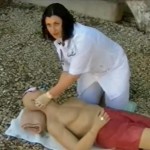 In the summer season, in hot weather, cases of overheating of the body are not uncommon.
In the summer season, in hot weather, cases of overheating of the body are not uncommon.
People spend a lot of time outdoors, because summer is the time for holidays, which means that we eat garden plots, the sea and spend a lot of time under the scorching sun. Of course, everyone and everyone needs to know how to behave when symptoms of heat stroke appear, and what actions need to be taken. Heat stroke is the result of overheating of the body.
Read completely "
 Primary debridement (PSW)
Primary debridement (PSW)
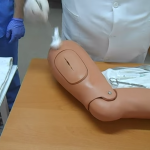 Primary surgical treatment of a wound is a surgical operation that must be performed in a medical and preventive institution by a doctor with the qualifications of a surgeon.
Primary surgical treatment of a wound is a surgical operation that must be performed in a medical and preventive institution by a doctor with the qualifications of a surgeon.
The goal is to exclude suppuration of damage and create conditions for speedy healing. Read completely "
 Transfusion of blood and its components
Transfusion of blood and its components
Indications for the transfusion of blood and its components
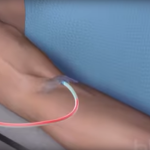 There are two categories of indications for the procedure of blood transfusion: absolute and relative .
There are two categories of indications for the procedure of blood transfusion: absolute and relative .
Examples of absolute indications are profuse blood loss, terminal state, shock. Relative indications include cases in which blood transfusion is only one of the components of treatment. In such situations, it is necessary to carefully consider the patient's contraindications for surgery in order to prevent complications. In acute anemia and leukemia, only erythrocyte mass is transfused. In some cases, transfusion of blood plasma is performed.
These include DIC, profuse blood loss of more than a third of the total circulating blood volume, coagulopathy, an overdose of anticoagulant drugs, a decrease in blood clotting factors (for example, with hepatitis) and some other abnormalities. Read completely "
 Determination of blood groups using coliclones
Determination of blood groups using coliclones
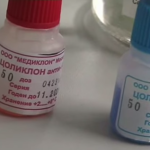 Zoliclones are monoclinal antibodies that are obtained from the blood of laboratory mice.
Zoliclones are monoclinal antibodies that are obtained from the blood of laboratory mice.
Everything is done through genetic engineering. The blood group, in our time, the ABO system, is established precisely with the help of these antibodies. Extremely large and high activity and avidity are demonstrated by coliclones, which suggests the time of arrival and the severity of the agglutination (gluing) reaction.
This technique is used only in a full-fledged laboratory.
Moreover, inside the cabinet, the temperature must be within the range starting from +15.0 and up to + 25.0 degrees Celsius. And the process of establishing a blood group can only occur with excellent lighting. Read completely "
 Determination of blood groups with standard sera
Determination of blood groups with standard sera
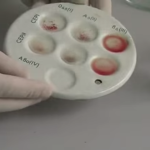 The determination of blood groups is based on the agglutination reaction, that is, sticking together.
The determination of blood groups is based on the agglutination reaction, that is, sticking together.
Lumps form when both agglutinogen A and agglutinin alfa, or agglutinogen B and agglutinin beta, or both are present in the sample. Agglutinogens are found in red blood cells, and agglutinins are components of blood plasma. Read completely "
 ECG technique
ECG technique
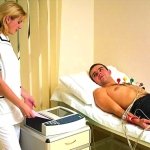
An important skill for a nurse is the correct technique for taking an ECG (electrocardiogram). Recall that electrocardiography is a technique for recording the electrical fields of the heart that arise in the course of its activity, as well as obtaining their graphic image on paper or a display. Electrocardiography is an informative and non-invasive method for studying the work of the heart - convenient and valuable for the patient and the attending physician.
 Transportation of the patient to the department
Transportation of the patient to the department
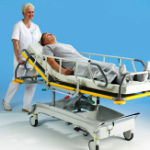
In nursing, one of the important skills is the safe transportation of the patient to the department upon admission to the hospital, as well as to auxiliary rooms as prescribed by the doctor. The purpose of this manipulation is to create maximum rest for the patient when moving.
Depending on the severity of the patient's condition, the doctor determines the type of transportation:
- on foot;
- in a wheelchair
- on a wheelchair;
- on a stretcher;
- on hands.
 Change of underwear and bed linen
Change of underwear and bed linen
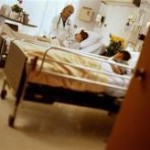
Patients in the hospital change underwear and bed linen is made in a planned manner 1 time in 7-10 days and on an emergency basis as it gets dirty. The nurse must be proficient in changing linen to ensure compliance with the patient's personal hygiene requirements.
Equipment
- A set of clean underwear and bed linen.
- Gloves.
- Bag for collecting dirty linen.
- Disinfectant container.
 Collection of urine according to Zimnitsky
Collection of urine according to Zimnitsky
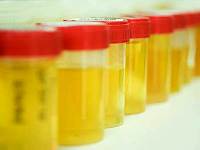
To study the excretory and concentration ability of the kidneys, a Zimnitsky test is performed. Such a diagnostic procedure is prescribed for patients with kidney pathology, as well as for diseases of the cardiovascular system (IHD, hypertension) and the endocrine system (diabetes mellitus). Proper collection of urine according to Zimnitsky ensures the reliability of the result of the study. The main task of the nurse is to educate the patient in the preparation and conduct of urine collection for analysis.
 Urinalysis according to Nechiporenko
Urinalysis according to Nechiporenko
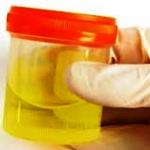
If it is necessary to quantify erythrocytes, leukocytes, cylinders (shaped elements) in the urine, a urine test according to Nechiporenko is performed. It is prescribed by a doctor when an increased number of leukocytes is detected in the general blood test , in the general analysis of urine - cylinders, and in other cases.
To obtain a reliable analysis result, the patient should be taught the preparation and direct collection of urine. The equipment for this procedure is a clean, dry jar or a plastic container with a hermetically sealed lid and a referral for research filled out in the prescribed form.
 BCG staging technique
BCG staging technique
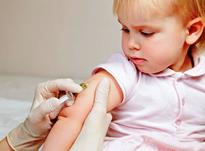
The TB vaccine is given with the BCG vaccine and is the very first vaccine that a newborn receives in the maternity hospital in the first days of his life. The BCG staging technique is not particularly difficult, but it requires the utmost care, composure and responsibility from the nurse. Only specially trained paramedical personnel are allowed to administer vaccinations.
The decoding of the abbreviation BCG in Russian sounds like “Bacillus Calmette-Guerin”, however, BCG is the “tracing paper” of the Latin abbreviation BCG, which means “bacillus Calmette-Guerin”.
 Mantoux test setting
Mantoux test setting
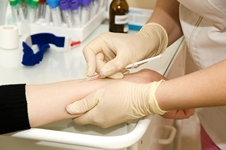
Tuberculin diagnostics, or Mantoux test, is carried out in order to select a contingent of patients for vaccination and revaccination of BCG, as well as to detect tuberculosis and infection with Mycobacterium tuberculosis.
Indications for Mantoux test
Appointment of a doctor in accordance with the vaccination schedule:
- from 1 to 7 years - 2 times a year (the interval between the Mantoux test is 6 months);
- from 7 years and older - 1 time per year (interval - 12 months).
- Read completely "
 Clinical blood test
Clinical blood test
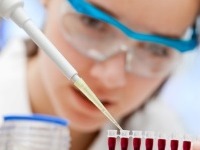
Most often in medical practice, a clinical blood test for diagnostic purposes. A general clinical blood test includes a qualitative and quantitative study of blood cells, which include:
- erythrocytes;
- platelets;
- leukocytes;
- amount of hemoglobin;
- erythrocyte sedimentation rate (ESR).
Changes in the cellular composition indicate the presence of pathological processes in the human body.
 The use of rectal suppositories
The use of rectal suppositories
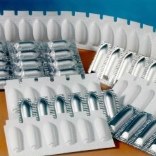
The use of rectal suppositories (suppositories) is indicated for diseases of the lower intestines, gynecological pathology, and also when it is impossible to administer the medicinal substance in another way.
The purpose of this procedure may be:
- the effect of the drug on the rectal mucosa;
- the introduction of the drug into the body enterally;
- rapid bowel movement.
Contraindications to the use of rectal suppositories
- Intestinal bleeding.
- Individual intolerance to the drug.
 Collection of urine for general analysis
Collection of urine for general analysis
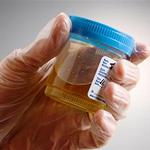
How urine is collected for general analysis and other studies, the nurse must know perfectly. Urine for general analysis is sent to study the functioning of the kidneys and other internal organs.
The analysis itself includes an assessment of the physicochemical characteristics of the studied biological fluid (urine), as well as a microscopic examination of the sediment.
The purpose of collecting urine for research is diagnostic, it consists in obtaining reliable results:
 Setting a siphon enema
Setting a siphon enema
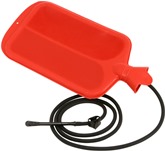 The setting of a siphon enema is carried out in order to most effectively free the intestines from feces, gases, decay and fermentation products. Siphon enema also helps in the diagnosis of intestinal obstruction.
The setting of a siphon enema is carried out in order to most effectively free the intestines from feces, gases, decay and fermentation products. Siphon enema also helps in the diagnosis of intestinal obstruction.
Indications for the procedure:
- Lack of proper effect from setting a cleansing enema .
- Removal of toxins, fecal, mucous, purulent contents from the intestinal cavity.
- Conditions accompanied by excessive processes of fermentation and putrefaction in the intestines.
- Severe flatulence.
- Preparation for surgical intervention on the intestines.
- Suspicion of intestinal obstruction.
 Emergency notification of infectious disease
Emergency notification of infectious disease
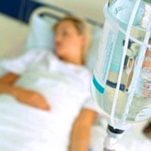
To prevent the spread of infections, according to the Order of the USSR Ministry of Health dated 04.10.80 N 1030, there is an “Emergency notification of an infectious disease” - an operational accounting document. Official registration form No. 058 / y, full name - "Emergency notification of an infectious disease, food, acute occupational poisoning, unusual reaction to vaccination."
Each case of an infectious disease or suspicion of it, pediculosis, poisoning or an unusual reaction to a vaccination must be transferred to the sanitary and epidemiological surveillance authorities. A notification is submitted no later than 2 hours after the discovery of the case. The sooner the notification is given, the easier it will be to take measures to prevent the spread of infection.
 Gastric lavage technique
Gastric lavage technique
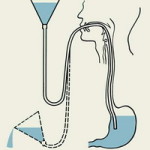
Gastric lavage is carried out both for therapeutic and diagnostic purposes. This probe procedure is based on the principle of communicating vessels and serves to pump out the contents from the stomach. The technique of gastric lavage requires concentration, knowledge of anatomy and physiology, and skills in manipulating the phantom from the nurse.
Indications for gastric lavage
- Poisoning by ingested poisons, alcohol, drugs, other toxic agents.
- Food poisoning.
- Gastric pathologies, including gastritis, with abundant mucus formation.
- Diagnosis of oncological diseases of the gastrointestinal tract.
- Identification of the pathogen in inflammatory processes in the stomach, as well as in the lungs and bronchi, when the patient cannot collect sputum.
 Vital capacity measurement
Vital capacity measurement
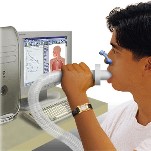
In order to assess the functional state of the respiratory system, the vital capacity of the lungs is measured using a special device - a spirograph.
Vital capacity (VC) is a value equal to the volume of air that the patient can exhale after taking the deepest possible breath. VC characterizes the state of the external respiration apparatus, allows you to assess the physical development of children and adolescents, to diagnose various diseases.
The procedure for determining the vital capacity of the lungs is called spirography . Manipulation requires the nurse to have knowledge about the device and the principles of operation of the apparatus, as well as the skills of examining patients.
 Suture removal technique
Suture removal technique
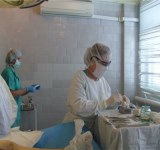
To fix and hold the edges of the wound in surgery, suturing is used. After 5-7 days, the skin sutures must be removed, that is, the suture material must be removed. This manipulation is carried out according to the doctor's prescription and under his control. The technique for removing sutures is not particularly difficult, but requires the nurse to be attentive, dexterous and follow all the rules of asepsis and antisepsis.
 Applying a cold compress
Applying a cold compress

The setting of a cold compress or lotion is used to reduce pain, to prevent the spread of hematomas and to reduce body temperature during fever.
Indications for cold compresses:
- the first hours after bruises and other injuries;
- nose bleed;
- second period of fever;
- inflammatory processes in the mammary glands;
- acute inflammatory processes in the mammary glands;
- hematomas.
Contraindications
- Diabetes.
- Skin diseases.
- Cold intolerance.
- Chills (it is necessary to wait until the patient is completely warm).
The setting of cold compresses and lotions is carried out according to the doctor's prescription. Unlike warm compresses, cold compresses do not close.
 Applying a warm compress
Applying a warm compress
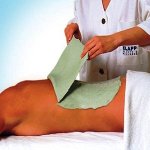
For local inflammatory processes, warming and hot compresses . The purpose of the procedure is to achieve an analgesic and resolving effect. The setting of a warm compress and a hot compress is carried out as directed by a doctor.
Indications for the use of hot and warm compresses are:
- local inflammatory processes in the skin and subcutaneous fat, in the joints;
- inflammation of the middle ear (otitis media);
- bruises a day after injuries;
- myositis;
- post-injection infiltrates.
Contraindications:
- high fever;
- acute inflammatory processes in the body;
- purulent and allergic skin diseases;
- violations of the integrity of the skin;
- you can not apply a compress to the area of skin treated with iodine in order to avoid deep burns.
 Throat and nose swab
Throat and nose swab
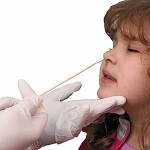 One of the important skills of a nurse is the ability to take a swab from the throat and nose for bacteriological studies.
One of the important skills of a nurse is the ability to take a swab from the throat and nose for bacteriological studies.
The purpose of taking swabs from the throat and nose : to identify the causative agent of the disease, bacterial carrier, and also to determine sensitivity to antibiotics.
contraindications to the procedure.
 Algorithm for measuring body weight
Algorithm for measuring body weight
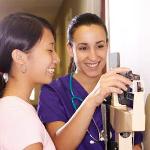
Let us analyze the algorithm for measuring body weight as one of the mandatory manipulations that a nurse of any profile should own. Body weight is determined for diagnostic purposes to assess physical development and evaluate dynamic changes in the patient's condition.
Indications for determining body weight:
- monitoring the physical development of a child, adolescent or adult;
- detection of deficiency or excess of weight;
- detection of hidden edema;
- observation of the dynamics of weight in the course of treatment of the cardiovascular, genitourinary, endocrine systems;
- admission of the patient to the hospital;
- doctor's appointment.
 Height Measurement Algorithm
Height Measurement Algorithm
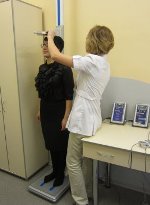
Consider the algorithm for measuring human height as one of the basic skills that a nurse should have. Height measurement is one of the measuring methods of anthropometry. The purpose of this process - diagnostic - is to assess the physical development or dynamics of the patient's condition.
Indications for measuring height:
- control over the physical development of the patient (child, adolescent, adult);
- endocrinological diseases (obesity, osteoporosis, impaired pituitary functions);
- admission of the patient to the hospital;
- doctor's appointment.
 Treatment with medical leeches
Treatment with medical leeches
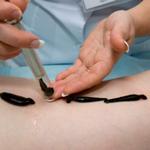
Currently, treatment with medical leeches (hirudotherapy) is used for hypertension, coronary heart disease, glaucoma, thrombophlebitis and vein thrombosis, hemorrhoids. As a goal from the use of leeches can be set:
- local bleeding;
- decrease in BCC (volume of circulating blood);
- decrease in blood clotting.
 Counting the number of breaths
Counting the number of breaths
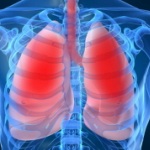
The functional state of the respiratory and cardiovascular systems will be determined by counting the number of respiratory movements in the patient. Indications for counting the frequency of respiratory movements are mainly diseases of the respiratory system and the cardiovascular system. Before considering the sequence of actions of this manipulation, let us recall what breathing is in general.
Breathing is the main life process that provides a continuous supply of oxygen to the body and the release of carbon dioxide and water vapor from the body. There are the following types of breathing in humans, depending on the involvement of the chest in the process.
 Canning technique
Canning technique
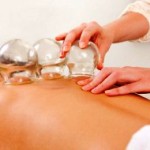 The therapeutic effect of medical cups is based on increased blood and lymph circulation in organs and tissues. The purpose of the procedure is the resorption of inflammatory processes, as well as the reduction of muscle pain.
The therapeutic effect of medical cups is based on increased blood and lymph circulation in organs and tissues. The purpose of the procedure is the resorption of inflammatory processes, as well as the reduction of muscle pain.
The technique of setting cans requires a certain skill, composure and caution.
Indications for setting medical jars:
- diseases of the upper respiratory tract;
- neuralgia, myositis;
- inflammatory diseases of the nerve trunks;
- congestion in the chest organs.
 Technique for setting mustard plasters
Technique for setting mustard plasters
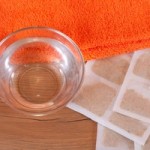
The use of mustard plasters is based on the therapeutic effect of mustard oil, which is part of the mustard, which is released from it at a temperature of 39 to 45 degrees.
The main effect of the procedure is to increase blood circulation, the goal is the resorption of inflammatory processes, pain relief.
The technique of setting mustard plasters is not difficult in practice, however, it is necessary to follow the existing rules and sequence of actions.
 Heating pad technique
Heating pad technique
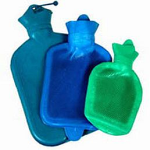
The use of a heating pad is based on its therapeutic effect, which consists in reflex relaxation of smooth muscles and increased blood supply to organs and tissues.
The ultimate goal of this procedure is to achieve analgesic and relaxing effects.
The technique of applying the heating pad must be carried out clearly and consistently in order to avoid complications. The procedure is performed strictly according to the doctor's prescription.
 Ice Pack Technique
Ice Pack Technique
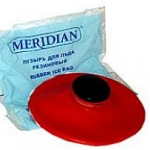
The use of an ice pack is carried out in the following pathological conditions:
- external and internal bleeding;
- acute inflammatory processes of the abdominal cavity;
- the first day after bruises;
- postpartum period;
- condition after an abortion;
- fever;
- insect bites;
- heatstroke.
The technique of using an ice pack is not complicated, but requires knowledge of the sequence and correctness of the nurse's actions. The action of the ice pack is based on:
- narrowing of blood vessels of deeply located organs and tissues;
- decreased receptor sensitivity.
 Algorithm for setting a cleansing enema
Algorithm for setting a cleansing enema
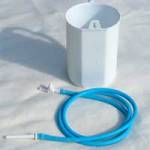
An enema is a procedure in which fluid is introduced into the lower segment of the large intestine for diagnostic or therapeutic purposes. A cleansing enema is prescribed to liquefy and remove the contents of the lower sections of the large intestine, cleaning it from feces and gases.
Before considering the algorithm for setting a cleansing enema , let us remind ourselves of the indications for its use: read in full "
 Temperature measurement rules
Temperature measurement rules

There are certain rules for measuring human body temperature. To begin with, remember that the normal temperature is from 36 to 37 degrees Celsius. Daily physiological fluctuations are no more than one degree (for example, in the morning the temperature is 36.0, in the evening - 37.0).
Thermometry - measurement of body temperature - in medical institutions is carried out 2 times a day. According to the doctor's testimony, in severe and febrile patients - more often. Read completely "
 Carrying out dressings
Carrying out dressings
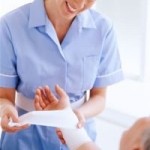 Consider how dressings are carried out according to approved standards.
Consider how dressings are carried out according to approved standards.
The first stage is preparatory
- The dressing room is being prepared for work: wet cleaning and bactericidal irradiation are carried out. Read completely "
 How to give subcutaneous injections
How to give subcutaneous injections
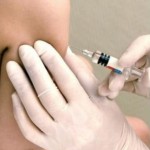
Every nurse must know how to give subcutaneous injections and be able to perform this manipulation correctly.
After changing into a treatment room uniform, the nurse washes her hands with antibacterial soap and disinfects them with an antiseptic. Puts on sterile gloves and prepares equipment for subcutaneous injection. Read completely "
 Algorithm for taking blood from a vein
Algorithm for taking blood from a vein
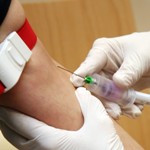
Consider the algorithm for taking blood from a vein for biochemical and serological studies.
On the eve of the study, the nurse warns the patient not to have breakfast, but to have dinner not late and not heavy. It should be explained that blood is taken on an empty stomach for analysis, because in this way the most reliable result is obtained.
 Performing an intradermal injection
Performing an intradermal injection
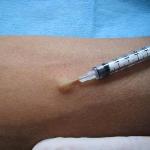
The intradermal injection prescribed by the doctor is most often a drug or allergic test. However, sometimes medicinal substances are also administered intradermally.
Before the manipulation, the nurse prepares for work in the treatment or vaccination room, as before performing intramuscular or intravenous injections. In addition to the uniform, gloves and a mask are required.
 Technique for measuring blood pressure
Technique for measuring blood pressure
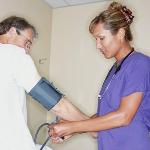 Consider what is the technique for measuring blood pressure with a conventional mechanical tonometer.
Consider what is the technique for measuring blood pressure with a conventional mechanical tonometer.
- Manipulation is carried out in the position of the patient lying or sitting.
- We release the patient's hand from clothing.
- We place the patient's hand in a relaxed state with the palm up approximately at the level of the heart.
- The tonometer is placed at the same level with the patient's hand.
- We put a cuff on the patient’s shoulder so that one finger can be placed under it. Rubber tubes should be located below, at the level of the center of the elbow.
- The phonendoscope is placed in the center of the cubital fossa. Read completely "